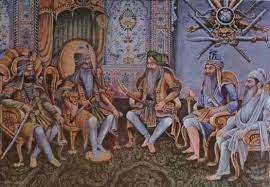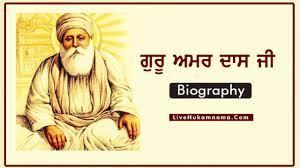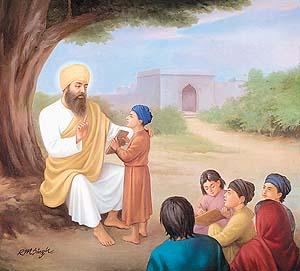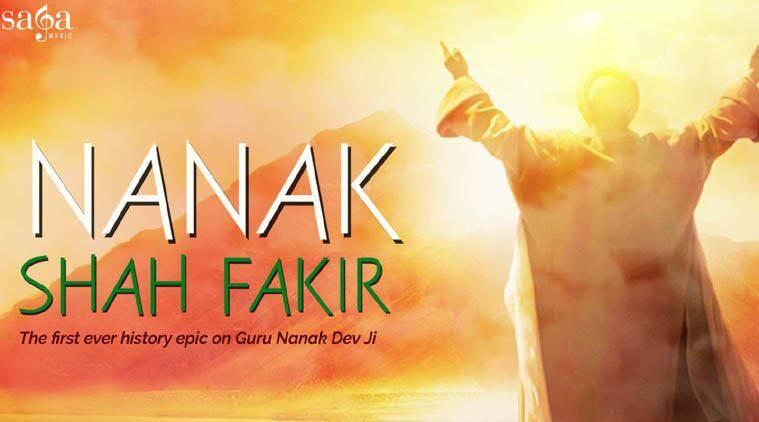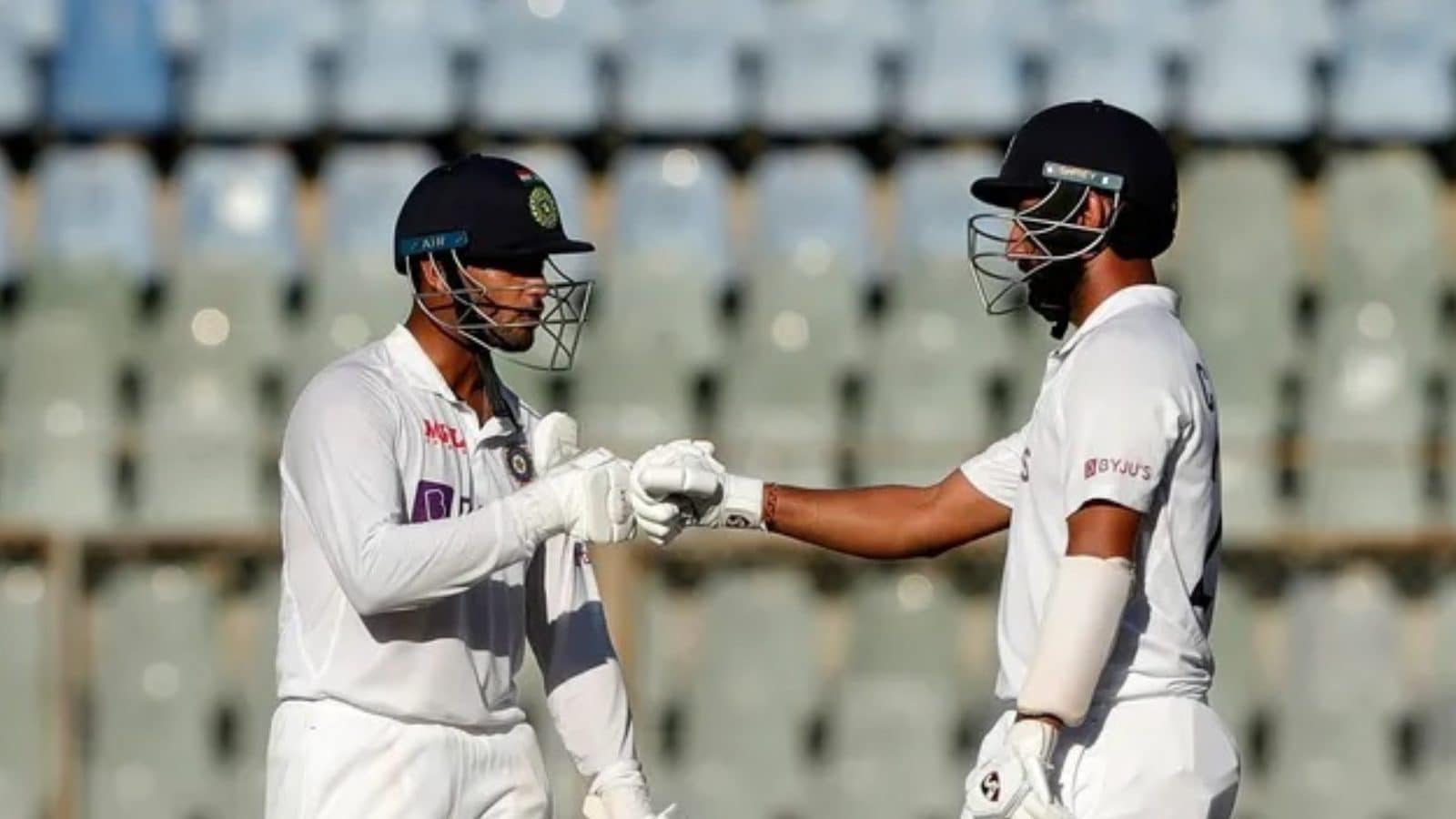Guru Nanak Dev Ji Teachings and legacy:
Nanak's teachings can be found in the Sikh scripture Guru Granth Sahib, as a collection of verses recorded in Gurmukhi.
There are two competing theories on Guru Nanak's teachings.[44] The first, according to Cole and Sambhi (1995, 1997), based on the hagiographical Janamsakhis,[45] states that Nanak's teachings and Sikhism were revelations from God, and not a social protest movement, nor an attempt to reconcile Hinduism and Islam in the 15th century.[46]
The other theory states that Nanak was a Guru, not a prophet. According to Singha (2009):[47]
Sikhism does not subscribe to the theory of incarnation or the concept of prophet hood. But it has a pivotal concept of Guru. He is not an incarnation of God, not even a prophet. He is an illumined soul.
The hagiographical Janamsakhis were not written by Nanak, but by later followers without regard for historical accuracy, containing numerous legends and myths created to show respect for Nanak.[48] In Sikhism, the term revelation, as Cole and Sambhi clarify, is not limited to the teachings of Nanak. Rather, they include all Sikh Gurus, as well as the words of men and women from Nanak's past, present, and future, who possess divine knowledge intuitively through meditation. The Sikh revelations include the words of non-Sikh bhagats (Hindu devotees), some who lived and died before the birth of Nanak, and whose teachings are part of the Sikh scriptures.
The Adi Granth and successive Sikh Gurus repeatedly emphasised, suggests Mandair (2013), that Sikhism is "not about hearing voices from God, but it is about changing the nature of the human mind, and anyone can achieve direct experience and spiritual perfection at any time."[44] Guru Nanak emphasised that all human beings can have direct access to God without rituals or priests.[20]
The concept of man as elaborated by Guru Nanak, states Mandair (2009), refines and negates the "monotheistic concept of self/God," where "monotheism becomes almost redundant in the movement and crossings of love."[50] The goal of man, taught the Sikh Gurus, is to end all dualities of "self and other, I and not-I," attaining the "attendant balance of separation-fusion, self-other, action-inaction, attachment-detachment, in the course of daily life."[50]
Guru Nanak, and other Sikh Gurus emphasised bhakti ('love', 'devotion', or 'worship'), and taught that the spiritual life and secular householder life are intertwined.[51] In the Sikh perspective, the everyday world is part of an infinite reality, where increased spiritual awareness leads to increased and vibrant participation in the everyday world.[52] Guru Nanak described living an "active, creative, and practical life" of "truthfulness, fidelity, self-control and purity" as being higher than the metaphysical truth.[53]
Through popular tradition, Nanak's teaching is understood to be practised in three ways:[54]
Vand Shhako (ਵੰਡ ਛਕੋ, 'share & consume'): Share with others, help those who are in need, so you may eat together;
Kirat Karo ('work honestly'): Earn an honest living, without exploitation or fraud; and
Naam Japo (ਨਾਮ ਜਪੋ, 'recite His name'): Meditate on God's name, so to feel His presence and control the five thieves of the human personality.
Guru Nanak Dev Ji Teachings and legacy:
Nanak's teachings can be found in the Sikh scripture Guru Granth Sahib, as a collection of verses recorded in Gurmukhi.
There are two competing theories on Guru Nanak's teachings.[44] The first, according to Cole and Sambhi (1995, 1997), based on the hagiographical Janamsakhis,[45] states that Nanak's teachings and Sikhism were revelations from God, and not a social protest movement, nor an attempt to reconcile Hinduism and Islam in the 15th century.[46]
The other theory states that Nanak was a Guru, not a prophet. According to Singha (2009):[47]
Sikhism does not subscribe to the theory of incarnation or the concept of prophet hood. But it has a pivotal concept of Guru. He is not an incarnation of God, not even a prophet. He is an illumined soul.
The hagiographical Janamsakhis were not written by Nanak, but by later followers without regard for historical accuracy, containing numerous legends and myths created to show respect for Nanak.[48] In Sikhism, the term revelation, as Cole and Sambhi clarify, is not limited to the teachings of Nanak. Rather, they include all Sikh Gurus, as well as the words of men and women from Nanak's past, present, and future, who possess divine knowledge intuitively through meditation. The Sikh revelations include the words of non-Sikh bhagats (Hindu devotees), some who lived and died before the birth of Nanak, and whose teachings are part of the Sikh scriptures.
The Adi Granth and successive Sikh Gurus repeatedly emphasised, suggests Mandair (2013), that Sikhism is "not about hearing voices from God, but it is about changing the nature of the human mind, and anyone can achieve direct experience and spiritual perfection at any time."[44] Guru Nanak emphasised that all human beings can have direct access to God without rituals or priests.[20]
The concept of man as elaborated by Guru Nanak, states Mandair (2009), refines and negates the "monotheistic concept of self/God," where "monotheism becomes almost redundant in the movement and crossings of love."[50] The goal of man, taught the Sikh Gurus, is to end all dualities of "self and other, I and not-I," attaining the "attendant balance of separation-fusion, self-other, action-inaction, attachment-detachment, in the course of daily life."[50]
Guru Nanak, and other Sikh Gurus emphasised bhakti ('love', 'devotion', or 'worship'), and taught that the spiritual life and secular householder life are intertwined.[51] In the Sikh perspective, the everyday world is part of an infinite reality, where increased spiritual awareness leads to increased and vibrant participation in the everyday world.[52] Guru Nanak described living an "active, creative, and practical life" of "truthfulness, fidelity, self-control and purity" as being higher than the metaphysical truth.[53]
Through popular tradition, Nanak's teaching is understood to be practised in three ways:[54]
Vand Shhako (ਵੰਡ ਛਕੋ, 'share & consume'): Share with others, help those who are in need, so you may eat together;
Kirat Karo ('work honestly'): Earn an honest living, without exploitation or fraud; and
Naam Japo (ਨਾਮ ਜਪੋ, 'recite His name'): Meditate on God's name, so to feel His presence and control the five thieves of the human personality.





